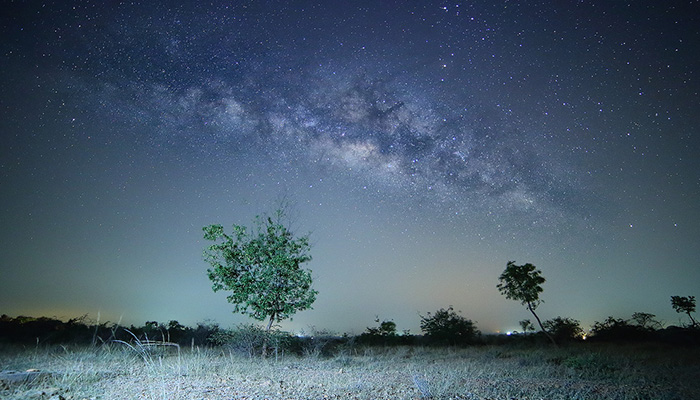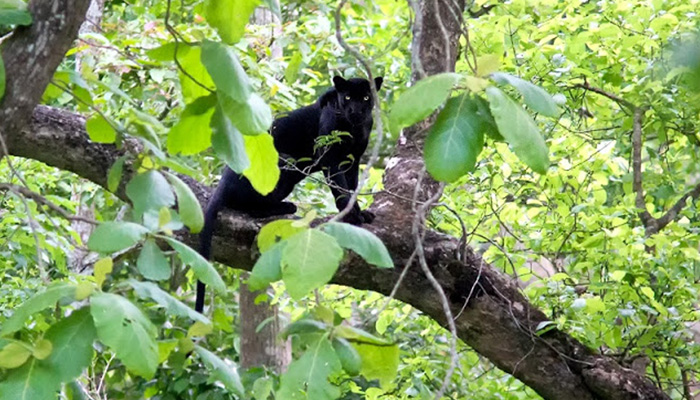
I was completely fallen in love with, when i witnessed it for the first time in my life. It’s like GOD’s finest masterpiece displayed across the sky… It’s my wish that everyone should witness in a REAL dark sky once in their lifetime. It’s truly amazing!
Shooting a Milky Way is a very easy task. Until you know the basis of Astro Photography!! Which I’ve explored recently.
How do I See the Milky Way
The Milky Way is visible to the naked eye under very dark skies and has the most detail. Unfortunately, 95% of our population lives under light polluted skies…. If you are located somewhere around city, it’s next to impossible to experience & witness the beauty of Galaxy & highly decrease the opportunity of seeing it from the terrace or on the roof top of your apartment.
Where to See the Milky Way
If you really want to see our Milky Way; you must find the nearest dark sky around you & find the Place with less light and dust pollution and those are the ideal places for viewing/photographing Milky Way.As known fact is Location is the key & it plays very important role in both Nature & wildlife images & the same Applied to Astro Photography. It’s up to the Photographers artist touch & wish; how to capture the elements & detail in the frame.
Planning & Knowledge – is another important aspect in Astro imaging; you must know, what is Milky Way visible time in our region? Which time of the year? Android Apps like “Star Chart” & “Google Sky Maps” & for IOS “Milky Way: Sky Map” helps you to understand which direction and time the milky way rises in your region, all you have to do is enter your location or you can enter your GPS location to coordinates for an accurate result.
How Do I Photograph The Milky Way?
To Photograph our Milky Way it doesn’t require expensive gears; a minimum wide-angle Lens and a basic DSLR with a good tripod is sufficient to capture this magnificent scape! In fact your lens plays an important part of it; your camera only records it. In the field of landscape astrophotography, the fast wide angle is the “front-runner”
Fast wide angle lenses have a larger Aperture & great field of view (FOV) help to gather more light, thus allow you to compose & frame more of the Milky Way with greater details. All recent APS-C digital SLRs like the Canon EOS 1200 & Nikon D3200 packed along with a kit lens of 18-55mm focal length; a wide angle of 18mm can be effectively used for Photographing our milky way.
Technique learned
“The Rule of 500” There are several rules followed from various Astro-photographers to determine how long your shutter speed should be to prevent star trailing, which will help us to keep us away from the edge of trailing. Our Primary goal is to get an image without trailing and we ensure we get maximum exposure on our subject as well.
To obtain the Rule of 500, you have to divide 500 with your focal length at which you wish to shoot.
For example, If you are shooting at a focal length of 18mm, (500/18) =27.7, so you can take a round of exposure 30 seconds to capture our galaxy.
Below are the images obtained by using “Rule of 500” without trailing of stars
In the 1st frame, I’ve included two trees in the foreground to create a visual Impact to the audience
2nd Frame – A Creative approach to Astro Photography using a Torch light
After you’ve done the preparations, here are a few tips for shooting the Milky Way,
- Most important, Plan your trip before monsoon clouds cover the sky.
- Always take additional Battery for your DSLR/Flash
- Torch light for the light source and for your creative imaging
- Pack enough snacks for the trip, since you will be on the field for almost the full night
It was always good to get back to what I love the best… being under the stars! & had a great time, able to witness the Milky Way just before Astro twilight ended.
Proud being the student of Nature.




